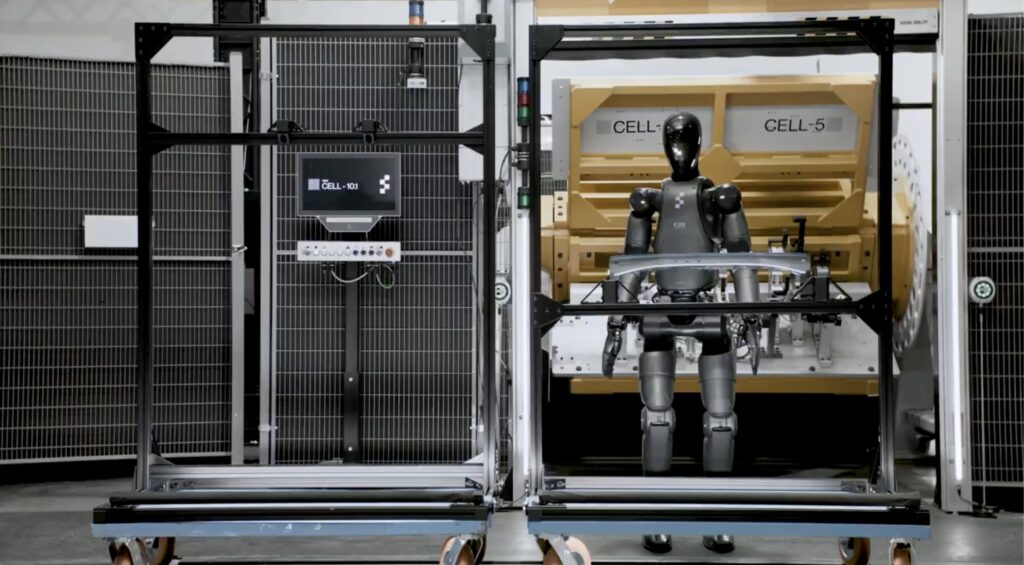A humanoid robot achieves record-breaking efficiency, paving the way for the future of autonomous manufacturing.
- Efficiency Breakthrough: The Figure 02 humanoid robot achieved a 400% increase in operational speed and a sevenfold success rate improvement at BMW’s Spartanburg plant.
- Precision in Action: The robot mastered high-precision tasks, like sheet metal insertion with millimeter accuracy, setting a new standard for industrial robotics.
- Future-Proofing Manufacturing: Backed by heavyweights like OpenAI and Nvidia, Figure AI plans broader deployment of humanoid robots by 2025.
Figure AI’s humanoid robot, Figure 02, has demonstrated extraordinary advancements at BMW’s Spartanburg facility. Capable of performing up to 1,000 precise placements daily, the robot represents a leap forward in autonomous manufacturing. Tasks once deemed too intricate for robots, such as inserting sheet metal into tight spaces with millimeter accuracy, were executed flawlessly, showcasing its ability to navigate complex industrial environments.
Figure AI founder Brett Adcock described the task as a formidable challenge, requiring unparalleled dexterity and precision to reduce the cycle time by four minutes per operation. Such feats highlight Figure 02’s potential to revolutionize manufacturing workflows, making processes faster and more reliable.
BMW Collaboration: A First for Humanoids
BMW’s decision to integrate Figure 02 into its production line underscores the automaker’s commitment to innovation. Although the robot’s presence at the Spartanburg plant is currently limited to tests, its successful performance hints at a broader adoption in the near future. Plans are already in motion for Figure 02 to return to the facility in early 2025.
BMW’s collaboration with Figure AI represents a paradigm shift, showcasing how humanoid robots can complement human workers in high-precision manufacturing tasks. While BMW has yet to finalize a timeline for deploying the robots, the pilot program signals an exciting evolution in automotive production.

Pushing the Boundaries of Robotics
Supported by a $675 million Series B funding round from industry giants like OpenAI, Nvidia, and Microsoft, Figure AI is well-equipped to scale its operations. Currently valued at $2.6 billion, the company aims to deploy more humanoid robots in real-world environments by 2025.
Adcock emphasized that Figure 02 is still far from reaching its full potential. “We are nowhere near the maximum speed that can be achieved by the motors,” he said, hinting at even greater efficiencies in the future. As the company collects more data and refines its AI models, further advancements in speed and precision are expected.
Shaping the Future of Automation
Figure 02’s success at BMW marks a significant step toward integrating humanoid robots into industrial settings. With its ability to handle complex tasks with unparalleled efficiency, the robot promises to transform manufacturing processes. As Figure AI continues to refine its technology and expand its deployment, the collaboration between robotics and industry offers a glimpse into a highly automated, efficient future.
The partnership between Figure AI and BMW is more than a technological milestone; it is a testament to the growing role of robotics in reshaping the modern workplace.

